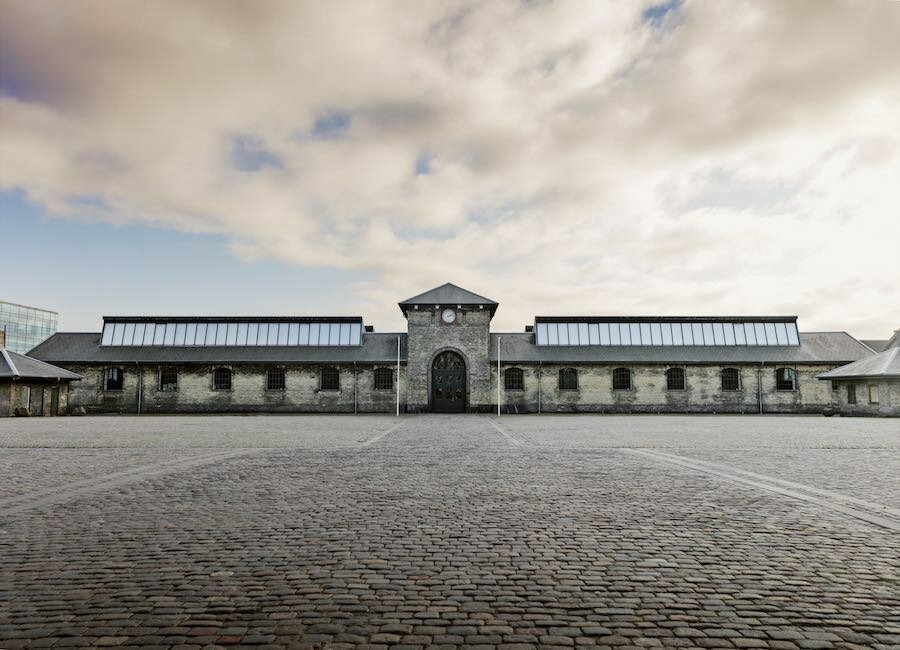INTERVIEW | MASER (E)
YOU ARE A STREET ARTIST. WHAT DOES PUBLIC SPACE MEAN TO YOU?
The public space is very important. Because it’s where I have always done my work. I also work in studios and I paint canvases, but it doesn’t excite me. The public space does really excite me. When people are interacting with it, the artwork becomes alive. I also do large works, large walls, big installations, bright colours, all that in the public space is very important because you want to catch the attention of the people. If you have an artwork just sitting on a wall – even though I like that -, like in a gallery, it serves different purposes. With a painted canvas the intentions are different. For this, my work is really about the experience of the people. I am just the facilitator. A messenger, more than an artist. I set it up and then the piece comes alive when the people are in it. So, if you can appear to people, that’s how the message spreads and that’s how your work spreads because the people enjoy it and photograph it.
YOU ALSO DO PIECES IN THE STREET WHERE PEOPLE CAN GO IN?
No, what I mean by that is to enter a piece with the use of typography. So the message is “you are alive”. And that allows people to take what they want from that message. It’s very open ended. And if people take that or get influenced by that the message grows further.
IS THERE A CERTAIN PUBLIC SPACE YOU DREAM OF WORKING ON?
Obviously a lot of footfall is good. The more people the better. But taking stuff out of context is always really good. You know, my stuff is very synthetic looking, with the pattern work and the colour. So putting that in a completely different environment is exciting. Dream places could be as easy as a pretty crazy scene in the desert. I had the idea that – I hope to still do it so some day – to do some work on water. At the shallow back at the sea, where the tide comes in and out. And then at a certain time it looks like the work is floating on the sea.
WHAT INSPIRES YOU?
Communication, and a lot of people, and probably people’s struggle. It’s a lot of day to day stuff that really inspires me, my day to day experiences. I always love to involve people in my work. If I can make them happy with it, that really inspires me. But if I look on my work over 10 years, it definitely changed quite a lot. Because everything that influences me also changes, so the work changes with it.
CREATING AN INSTALLATION, WHAT IS THE INITIAL TRIGGER, A THOUGHT, A MESSAGE, OR IDLE SPACE?
It’s the continuation of the narrative of my work. And that is, as being a graffiti writer, to look of how graffiti interrupts the landscape. So let’s say, you go to work everyday, and then one day there’s this huge graffiti piece. That really interests me, how to interrupt the space. So I use that pattern work to do that. To let it interrupt the building. I change the context of things.
WHAT WAS YOUR INSPIRATION CREATING “MOVING TOGETHER”?
So with this piece (MOVING TOGETHER) … I can not only interrupt, but I can also dictate people through my work. It’s the idea of interrupting and navigating someone. That was what inspired me for this work. Especially with the areal view, looking down and seeing people really being integrated into the art. The piece is coming alive once people walk into it. It becomes a big canvas. I don’t look at it so much as an installation, but a big three dimensional painting where you can look at the walls while you are walking in it.
WHICH ROLES DO COLOURS AND ABSTRACT FORMS HAVE ON INFLUENCING PEOPLES PERCEPTION?
The colour is important. In this environment which is quite industrial, dusty and rough, I use really high-contrast colours together. And I use colour theories like hot and cold colours, I always put yellow beside a blue, a purple with yellow or orange, contrasting colours. The more out of context and synthetic it looks the better for me. Being a graffiti writer, you want a piece to pop, you want everyone to see it. I still have that mentality. I want people to look at my piece before they look at anyone else’s. That’s a graffiti writer`s thing. I want to have the biggest, brightest piece in here, which I think I have.
IN WHICH WAY CAN PHOTOGRAPHY ENHANCE THE HYPERVISUAL EXPERIENCE OF YOUR ART?
That’s essential. Because three dimensional work is sometimes really difficult to take into context. You need to see it in 2D. So while I am painting this, I am constantly photographing and looking on the screen. That pulls it all together. There are just too many things to take in when you look at a three dimensional work. Obviously, when people come in, and experience, that’s one thing. But then it’s very essential to have those photographs for me. That is how I share it online. And when I have an exhibition, that’s how I really can see it all working together.




